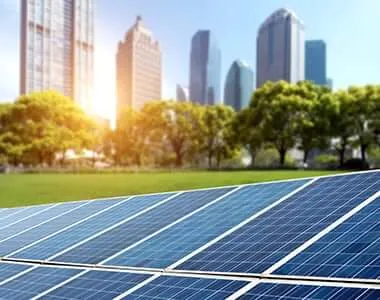Comparing Solar Microinverters and String Inverters for Optimal Energy Production
Solar Microinverters vs. String Inverters A Comprehensive Comparison
In the realm of solar energy systems, the choice of inverter plays a crucial role in determining the efficiency and effectiveness of energy conversion. Two popular types of inverters in the market are microinverters and string inverters. Each comes with its own set of advantages and disadvantages. Understanding the differences and applications of these inverters can help homeowners and businesses make informed decisions about their solar energy investments.
1. Understanding the Basics
Before diving into the comparison, it’s essential to understand what inverters do in a solar power system. The primary function of an inverter is to convert the direct current (DC) electricity generated by solar panels into alternating current (AC) electricity, which is needed for home appliances and the electrical grid.
2. String Inverters A Conventional Choice
String inverters are the traditional type of inverter used in solar installations. In this system, multiple solar panels (usually between 5 to 20) are connected in series, forming a string. The collected DC electricity from the string is then sent to a central inverter, which converts it to AC.
Advantages of String Inverters
- Cost-Effective String inverters are generally less expensive to install than microinverters. For larger systems, string inverters can offer a greater return on investment due to their lower upfront costs.
- Simplicity With fewer components to manage, string inverters are easier to install and maintain. A single inverter can handle the output from multiple panels, leading to a more straightforward wiring process.
- Efficiency in Optimal Conditions When installed in optimal conditions with uniform sunlight exposure, string inverters can achieve high efficiency levels.
Disadvantages of String Inverters
- Shade Sensitivity If one panel in the string is shaded or experiences lower performance due to dirt or damage, it can reduce the overall output of the entire string. This phenomenon, known as the Christmas light effect, can significantly impact energy production.
- Limited Monitoring String inverters provide limited monitoring capabilities. Although some offer monitoring solutions, they often do not allow users to see the performance of individual panels.
solar microinverter vs string inverter

3. Microinverters The Modern Alternative
Microinverters operate differently; each solar panel has its own mini inverter attached to it. This configuration allows each panel to function independently, converting DC power to AC on-site.
Advantages of Microinverters
- Enhanced Performance Microinverters maximize energy production by allowing each panel to operate at its optimal efficiency. If one panel is shaded, the others can still produce energy at full capacity.
- Detailed Monitoring Microinverters typically come with advanced monitoring systems that allow users to track the performance of each panel individually. This feature is particularly useful for identifying issues and ensuring optimal energy production.
- Scalability Microinverters make it easy to expand a solar system incrementally. Homeowners can add more panels or upgrade their system without needing to replace the existing inverter.
Disadvantages of Microinverters
- Higher Initial Costs The installation of microinverters can be more expensive due to the greater number of inverters needed. This upfront cost can deter some homeowners, even though the long-term benefits may outweigh this initial investment.
- Complex Installation While modern microinverters are designed for ease of use, the installation process can be more complex due to the numerous components.
4. Conclusion Choosing the Right Inverter
Ultimately, the choice between solar microinverters and string inverters depends on several factors, including installation type, budget, and energy needs. String inverters may be a suitable choice for installations where panels receive uniform sunlight and where budget constraints are a priority. Conversely, microinverters shine in conditions with potential shading issues or when detailed monitoring and scalability are essential.
As solar energy continues to grow in popularity, understanding these options and their trade-offs is vital. By considering the specific circumstances of your solar energy needs, you can select the inverter that aligns best with your goals, ensuring a successful and efficient solar power experience.
-
Unlocking Energy Freedom with the Off Grid Solar InverterNewsJun.06,2025
-
Unlock More Solar Power with a High-Efficiency Bifacial Solar PanelNewsJun.06,2025
-
Power Your Future with High-Efficiency Monocrystalline Solar PanelsNewsJun.06,2025
-
Next-Gen Solar Power Starts with Micro Solar InvertersNewsJun.06,2025
-
Harnessing Peak Efficiency with the On Grid Solar InverterNewsJun.06,2025
-
Discover Unmatched Efficiency with the Latest String Solar InverterNewsJun.06,2025







